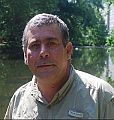DOWNLOAD BEYOND THE GUIDEBOOK 2010: “It is captivating with the stories, quotes and pictures,” stated Kathy Bishop, Curriculum Chair for Leadership BC – Central Vancouver Island (June 2010)

Beyond the Guidebook 2020 shows how to achieve water sustainability through outcome-oriented urban watershed plans. “It is a great resource, well written … Down to earth, and in line with what the Water Sustainability Action Plan speaks about… The new business as usual, connecting the dots and giving useful tools and roadmaps for success. It is an easy read,” stated Kathy Bishop. “I also see that it is inspiring, with all the VI municipalities stories, for Vancouver Island to move forward with connecting the dots throughout the Island. What a great foundation/springboard for The Nanaimo Dialogue.”
CREATING A CULTURE FOR URBAN WATERSHED RESTORATION: Flashback to rollout of Beyond the Guidebook 2010 which provided guidance for a regional team approach founded on shared responsibility – “A good idea is immediate, but preparation for implementation can take 5 to 10 years. Change will then take place quickly,” stated Glen Brown at the 2010 Annual Convention of BC Municipalities

“In 2005, we said this would be a different kind of guidebook. We said that the Guidebook would be the ‘telling of the stories’ of how change is being implemented on-the-ground in BC. Before the chapters could be written, however, the regional case studies had to run their course. Five years later, Beyond the Guidebook 2010 is the story of how we got to here and where we are going next. If one goes back 10 years, there was a void of policy and legislation. This led us down an educational path as the logical alternative. We took the Stormwater Planning Guidebook, which is a document released in 2002, and we moved it to implementation,” stated Glen Brown.
FLASHBACK TO 2012: “Given the huge knowledge bases that the sciences have built up around the hydrology of urban watersheds, it can come as a surprise when we realize how little is known about some of the basics. The urban tree canopy is an example,” stated (the late) Dr. Charles Rowney, Scientific Authority, when the Partnership for Water Sustainability announced the addition of a Tree Canopy Module to the Water Balance Model

“Tree canopy interception of rainfall is a technical area where the fundamentals are well understood, but the empirical basis, the availability of actual observations, is still in its infancy. When it comes to the urban canopy, we just don’t have a lot to go on. Considering the importance of urban trees, we’re not sure why this knowledge gap has persisted. But when we began our research, it quickly became clear that there is a lot to learn about some of things that are important in dealing with the tree canopy. And it became just as clear that we had to improve the science,” stated the late Dr. Charles Rowney.
URBAN TREES AS A RAINWATER MANAGEMENT TOOL: “We found that individually planted trees capture, store and release stormwater back into the atmosphere—a process called transpiration—at a rate three times that of trees in a forest,” stated doctoral candidate Sarah Ponte, Department of Environmental Science and Technology at the University of Maryland (November 2021)

“We explored how trees function in different urban contexts, from streets to small patches of forest. This is knowledge that can help support the management of green infrastructure,” stated Sarah Ponte. “Understanding how different management contexts affect urban ecohydrologic fluxes, such as transpiration, can aid the development of policy on the application and effectiveness of urban tree canopy as a tool for stormwater runoff reduction at watershed and city scales,”
WATERSHED CASE PROFILE SERIES: “A Beacon of Inspiration: Bowker Creek Blueprint and 100-Year Action Plan” – an inspirational story of intergenerational commitment by so many players to peel back the pavement, daylight an historical creek, and restore nature within the Victoria urban region on Vancouver Island (released September 2021)

“Technical knowledge is not enough. You learn that technical competence alone is not going to get you there. That is what I want to pass on to people. If you have a technical problem, it is relationships that matter most. Strong relationships help make the Bowker Creek Initiative agile. We need agility because we do not have the time and resources. At one level, all of us are too busy. At another level, and given the challenges posed by the issues of the day, we need to move on opportunities very quickly. Over a career, you do learn that it is all about understanding people. Technical knowledge is incidental sometimes,” stated Jody Watson.
BEYOND THE GUIDEBOOK SERIES: “Looking ahead to 2022, the Partnership will showcase parallel streams of effort by our local government partners in five sub-regions over the past two decades when we celebrate the 20th anniversary of the Stormwater Planning Guidebook. This is a milestone in a science-based approach,” stated Ted van der Gulik, President of the British Columbia Partnership for Water Sustainability

“Looking back, 2021 is an extraordinary year of accomplishment for the Partnership. We continued to elevate our game and in so doing demonstrated what is possible. We provided leadership for a range of initiatives of provincial importance. Successes were achieved through the power of collaborative leadership. The process involves bringing the right people together in constructive ways with good information, such that they create authentic visions and strategies for addressing the shared concerns of their organizations and communities,” stated Ted van der Gulik.
GENERATIONAL AMNESIA: “We transform the world, but we don’t remember it. We adjust our baseline to the new level, and we don’t recall what was there. You can have a succession of changes. At the end you want to sustain miserable leftovers. And the question is, why do people accept this? Well, because they don’t know that it was different,” stated UBC’s Dr. Daniel Pauly, a living legend in the world of marine biology

In September 2021, Greystone Books published The Ocean’s Whistleblower. It is the first authorized biography of Daniel Pauly, a truly remarkable man. Daniel Pauly is a living legend in the world of marine biology. And he lives in British Columbia. Among his many contributions is the Shifting Baseline Syndrome. This is a foundational concept. And it goes to the heart of the vision for intergenerational collaboration.
FLASHBACK TO 2003 TESTIMONIAL: “In the United States, too often we see a cookie-cutter approach when guidebooks and manuals are replicated across the country. Not so with the British Columbia Guidebook – it is unique and it is innovative,” stated Tom Schueler, founder and former Executive Director of the Center for Urban Watershed Protection, one of the best known nonprofit organizations in the United States dedicated to research and education on watersheds

In 2002, British Columbia launched a science-based approach to stormwater management with publication of its provincial Guidebook. “I really like what Kim Stephens and his British Columbia team did in developing the water balance methodology, and I told him that when he pinch-hit for me in delivering a pre-conference workshop in Chicago in February 2003. That was shortly after the Guidebook was published,” stated Tom Schueler, author of widely used references, including The Small Watershed Restoration Manual Series.
A VIEW FROM OUTSIDE BRITISH COLUMBIA: “Bound by geography, invested in salmon protection, and connected to the natural environment, the Metro Vancouver region has spent time fostering new green infrastructure for rainwater management,” stated Charles Axelesson, PhD candidate at the University of Venice, when reflecting on readings and discussions with people in the Metro Vancouver region

“There is an openness and not only an admission but the acceptance that the existing green policies and practices they have now, particularly for replicating natural flow patterns in urban streams, may not hold all the answers. Even the natural world is sometimes overwhelmed by rainfall. Instead, there is a direct discussion on how to maximize greener solutions but support them with our existing infrastructure and knowledge base. This is vital for climate change adaptations as we need to plan for 50 to100 years into the future while simultaneously solving the problems of tomorrow,” stated Charles Axelsson.
RESTORE THE BALANCE IN THE WATER BALANCE: “Sponge Cities”- A catchy way to describe the goal in restoring the capacity of the urban landscape to absorb water, release it naturally, and soften the impacts of floods and droughts!

“Extreme weather, a changing climate, and impervious streets and roads have combined to create an urban disaster. All of this has seen cities begin to re-imagine their relationship with water. Rather than just designing systems that allow the water to drain away slowly and stably, they want to harvest and reuse it. This approach to urban design – where water is held in place to be called-upon when needed – is known as the ‘sponge city’, and it is rapidly growing in popularity,” stated Laurie Winkless.

